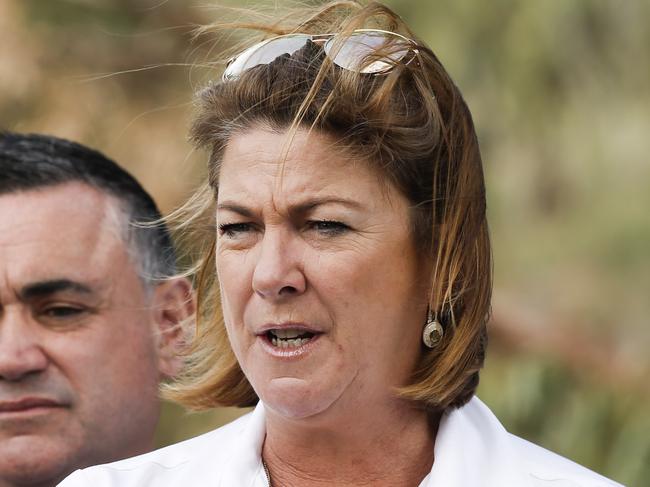Bushfires: Threat to tap water from ash pollution
Environmental engineers have warned that residents in bushfire-affected states could soon be drinking ‘musty’ yellow-tinged tap water.

Environmental engineers have warned that residents in bushfire-affected states could soon be drinking yellow-tinged tap water and face ramped-up water restrictions, with treatment facilities set to struggle with a barrage of ash and other pollutants in dams.
As NSW authorities launched a last-ditch effort to install curtains that trap ash, to stop it entering Sydney’s largest dam ahead of predicted rain this week, water experts said the bushfires could give the city’s drinking water a “musty and earthy flavour” in the coming weeks and months.
While Sydney’s Warragamba Dam survived threats to its critical infrastructure during recent bushfires, NSW Water Minister Melinda Pavey announced on Tuesday that her government was now concentrating on protecting Sydney’s water supply ahead of predicted heavy rains of up to 100mm in some parts of NSW.

Water NSW has already installed silt curtains and floating barriers to lessen the inflow of ash into Warragamba Dam and reduce the pressure on its treatment plant, which isn’t designed to cope with the amount of sediments that could flow in.
A Water NSW spokesman estimated more than 300,000ha of bushland around Warragamba catchment had burned this fire season, with rain threatening to wash ash and debris into the dam.
In South Australia, Kangaroo Island faces “another couple of weeks” without its largest water treatment facility, after key electrical components and controls, monitoring equipment and communications systems burned in the fires on January 3.
In the meantime, many of the island’s roughly 4500 residents are relying on bottled water being handed out at relief centres.
“We’re asking people to conserve water to just drinking and general hygiene so we can continue to have water for everyone,” an SA Water spokeswoman told The Australian. “We really just don’t know when it will be back.”
While water authorities in NSW and South Australia scramble to protect supply in the aftermath of the bushfires, Stuart Khan, professor of civil and environmental engineering at the University of NSW, said residents could soon experience deteriorating water quality.
“The really immediate thing during the fires is where you have treatment plants losing power or being damaged, and we’ve seen that on Kangaroo Island, as well as in (parts of) NSW.
“Water was also needed to fight fires in such large volumes, and storages couldn’t keep up, that’s why there was untreated water in rivers and warnings to residents to boil,” Professor Khan said.
“Untreated water is prone to bacteria from dead animals … and I’d expect this to be a growing problem with more bushfire seasons like this.’’
Professor Khan said that, in the short term, rainfall events over catchments that flowed into smaller and shorter dams could slow down water treatment processes and lead to water discolouration.
“Trees and grass that hold soil together have burnt. So we’ve lost a lot of the glue that holds soil. Really heavy rain could cause mudslides and a lot of soil and mud ending up in the waterways.
“The first step of treatment plants is always removing sediment from the water. They’re designed to operate with a certain amount of sediment, and once you step out of that window with heavy loads of ash and soil the treatment processes will struggle” he said.
“If they’re not operating effectively, there may be some discolouration to the water.”
Professor Khan said this would only occur in Sydney if rainfall was very heavy, noting that the city’s bigger dam allowed more water movement and more sediment to separate before treatment.
“The water might look a bit off-colour … it’s possible it will be tinged yellow,” he said.
Professor Khan said if treatment plants across states slowed to treat a higher concentration of sediment, less water availability could cause authorities to increase water restrictions.
“If you’re struggling to produce water at the rate needed, you’d have to impose short-term restrictions on water,” he said.
Professor Khan said ash in dams would likely lead to blue-green algal blooms, which could affect water taste in Sydney, similar to when it occurred in 2007.







To join the conversation, please log in. Don't have an account? Register
Join the conversation, you are commenting as Logout